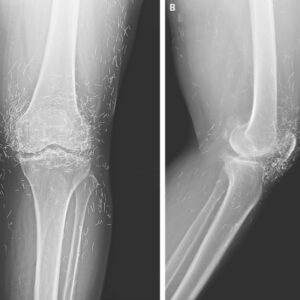
The rare disease that claimed the life of Gene Hackman’s beloved wife, Betsy, is back in the spotlight — and this time, it could be worse than ever.
Doctors are now sounding the alarm over a disturbing trend
It hasn’t been long since Betsy Arakawa and legendary actor Gene Hackman were found dead under mysterious circumstances in their New Mexico home.
Shock quickly turned to heartbreak as official reports revealed the grim truth: Hackman had been suffering from advanced dementia and severe heart disease — while his wife, Betsy, just 65 years old, had tragically fallen victim to the rare and deadly hantavirus.
Betsy Arakawa is believed to have died around February 11, followed by Gene Hackman, who passed away a week later on February 18.

Now, barely two months after Arakawa’s sudden and tragic death, the same deadly disease has struck again — claiming the lives of three more Americans in a quiet California town of Mammoth Lakes, sending shockwaves through the local community and alarming health officials nationwide.
According to Mono County Public Health, all three victims lived and worked in the picturesque town of Mammoth Lakes, nestled at the base of Mammoth Mountain.
Each began feeling unwell sometime in February.
The first death was reported on February 27, the second on March 26, and the most recent just this past Thursday. One of the victims had a significant rodent infestation in their home, while no signs of mice were found in the residences of the other two.
Growing concerns
In a statement released on April 3, Dr. Tom Boo, Mono County’s Public Health Officer, addressed growing concerns following the third confirmed case of Hantavirus Pulmonary Syndrome (HPS) — all of which have ended in tragedy.
”A third case of Hantavirus Pulmonary Syndrome (HPS), each of which has been fatal, is tragic and alarming,” Boo stated.
”We don’t have a clear sense of where this young adult may have contracted the virus. The home had no evidence of mouse activity. We observed some mice in the workplace, which is not unusual for indoor spaces this time of year in Mammoth Lakes.”

“We haven’t identified any other activities in the weeks before illness that would have increased this person’s exposure to mice or their droppings. We’ve been aware of this suspected case for some weeks, but it has taken time to obtain testing.”
His remarks highlight the frustrating unpredictability of the virus and the difficulty health officials face in tracing its exact source.
Health officials in Mono County believe deer mouse populations are unusually high this year in Mammoth Lakes — a troubling development that may be fueling the recent spike in cases.
”The occurrence of three cases in a short period has me worried, especially this early in the year. Historically, we tend to see Hantavirus cases later in the spring and in the summer. We’ve now gone about a month without any additional suspect cases, but remain concerned about the increase in activity,” Boo shared.
The most effective way to prevent infection
Hantavirus is a rare but often fatal disease, typically transmitted to humans through exposure to infected deer mice or their droppings.
Although hantavirus disease is rare in humans and even more uncommon in our region, it has been reported in 41 states across the United States.
As of the end of 2022, a total of 864 cases have been documented since surveillance began in 1993.
Officials note that the symptoms of hantavirus typically start with general flu-like signs, including fever, headache, and body aches. In some cases, symptoms also include vomiting, diarrhea, and abdominal pain.
The most effective way to prevent infection is by ensuring that wild rodents are kept out of your home, workplace, vehicle, or any other enclosed areas.
“I want to emphasize that as far as we know, none of these deceased individuals engaged in activities typically associated with exposure, such as cleaning out poorly ventilated indoor areas or outbuildings with a lot of mouse waste,” Dr Boo said in the statement and added:
”Instead, these folks may have been exposed during normal daily activities, either in the home or the workplace. Many of us encounter deer mice in our daily lives and there is some risk. We should pay attention to the presence of mice and be careful around their waste.”
We hope no one else falls victim to this terrible disease, so please help spread the word and raise awareness about the risks posed by deer mice and their droppings.





